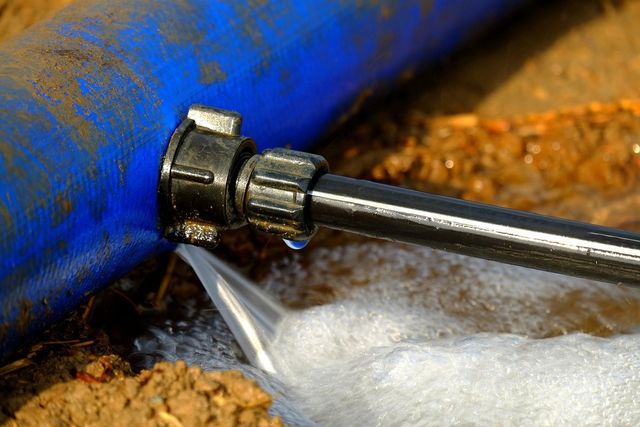Exactly how to Inspect If Your House Has a Concealed Leakage
Exactly how to Inspect If Your House Has a Concealed Leakage
Blog Article
Every person will have his or her own rationale on the subject of Top leak detection hacks.

Early detection of leaking water lines can minimize a prospective calamity. Some tiny water leakages might not be noticeable.
1. Analyze the Water Meter
Every residence has a water meter. Examining it is a surefire manner in which aids you discover leaks. For starters, turn off all the water sources. Make sure no one will purge, utilize the faucet, shower, run the washing machine or dishwasher. From there, go to the meter and watch if it will alter. Because nobody is utilizing it, there must be no movements. That shows a fast-moving leak if it moves. Similarly, if you detect no changes, wait an hour or two as well as examine back once more. This means you might have a sluggish leakage that can also be underground.
2. Inspect Water Consumption
Assess your water bills and also track your water usage. As the one paying it, you need to notice if there are any type of disparities. If you spot sudden changes, regardless of your intake coinciding, it indicates that you have leaks in your plumbing system. Remember, your water bill need to drop under the exact same range every month. An abrupt spike in your expense indicates a fast-moving leakage.
Meanwhile, a consistent boost monthly, despite the same routines, shows you have a sluggish leak that's likewise gradually escalating. Call a plumber to extensively inspect your home, specifically if you feel a cozy area on your flooring with piping beneath.
3. Do a Food Coloring Test
When it comes to water consumption, 30% comes from toilets. If the shade somehow infiltrates your bowl throughout that time without flushing, there's a leak between the storage tank and also bowl.
4. Asses Exterior Lines
Do not forget to examine your exterior water lines as well. Test spigots by connecting a yard tube. Must water seep out of the connection, you have a loose rubber gasket. Change this and ensure all connections are tight. If you've obtained a sprinkler system, it will certainly assist get it skillfully analyzed and preserved yearly. One little leak can throw away tons of water and increase your water expense.
5. Check and Evaluate the Scenario
Property owners must make it a habit to examine under the sink counters and also also inside cabinets for any type of bad odor or mold and mildew growth. These 2 red flags suggest a leakage so prompt attention is needed. Doing routine examinations, also bi-annually, can conserve you from a significant issue.
Inspect for discolorations and also damaging as a lot of pipes and also home appliances have a life expectancy. If you think dripping water lines in your plumbing system, do not wait for it to escalate.
Early discovery of leaking water lines can alleviate a potential catastrophe. Some tiny water leakages might not be visible. Examining it is a proven way that helps you find leakages. One tiny leak can squander lots of water as well as surge your water costs.
If you presume dripping water lines in your plumbing system, do not wait for it to escalate.
WARNING SIGNS OF WATER LEAKAGE BEHIND THE WALL
PERSISTENT MUSTY ODORS
As water slowly drips from a leaky pipe inside the wall, flooring and sheetrock stay damp and develop an odor similar to wet cardboard. It generates a musty smell that can help you find hidden leaks.
MOLD IN UNUSUAL AREAS
Mold usually grows in wet areas like kitchens, baths and laundry rooms. If you spot the stuff on walls or baseboards in other rooms of the house, it’s a good indicator of undetected water leaks.
STAINS THAT GROW
When mold thrives around a leaky pipe, it sometimes takes hold on the inside surface of the affected wall. A growing stain on otherwise clean sheetrock is often your sign of a hidden plumbing problem.
PEELING OR BUBBLING WALLPAPER / PAINT
This clue is easy to miss in rooms that don’t get much use. When you see wallpaper separating along seams or paint bubbling or flaking off the wall, blame sheetrock that stays wet because of an undetected leak.
BUCKLED CEILINGS AND STAINED FLOORS
If ceilings or floors in bathrooms, kitchens or laundry areas develop structural problems, don’t rule out constant damp inside the walls. Wet sheetrock can affect adjacent framing, flooring and ceilings.
https://www.servicemasterbyzaba.com/blog/how-to-detect-water-leakage-in-walls/

As a keen reader about Finding hidden leaks, I was thinking sharing that excerpt was sensible. Are you aware of somebody else who is occupied with the subject? Take a moment to share it. Thanks for going through it.
Report this page